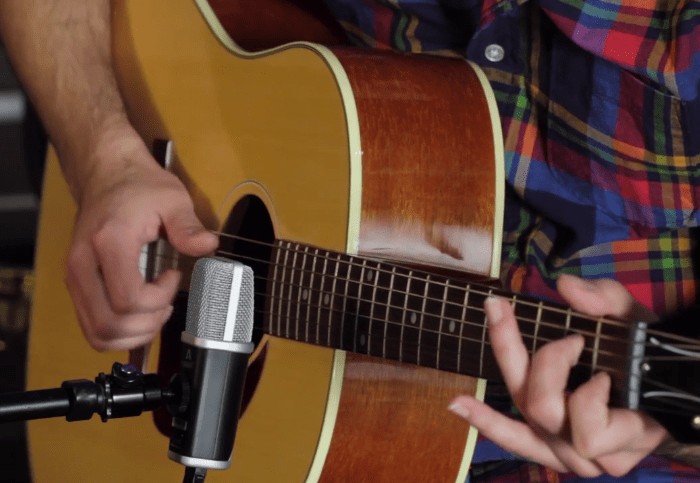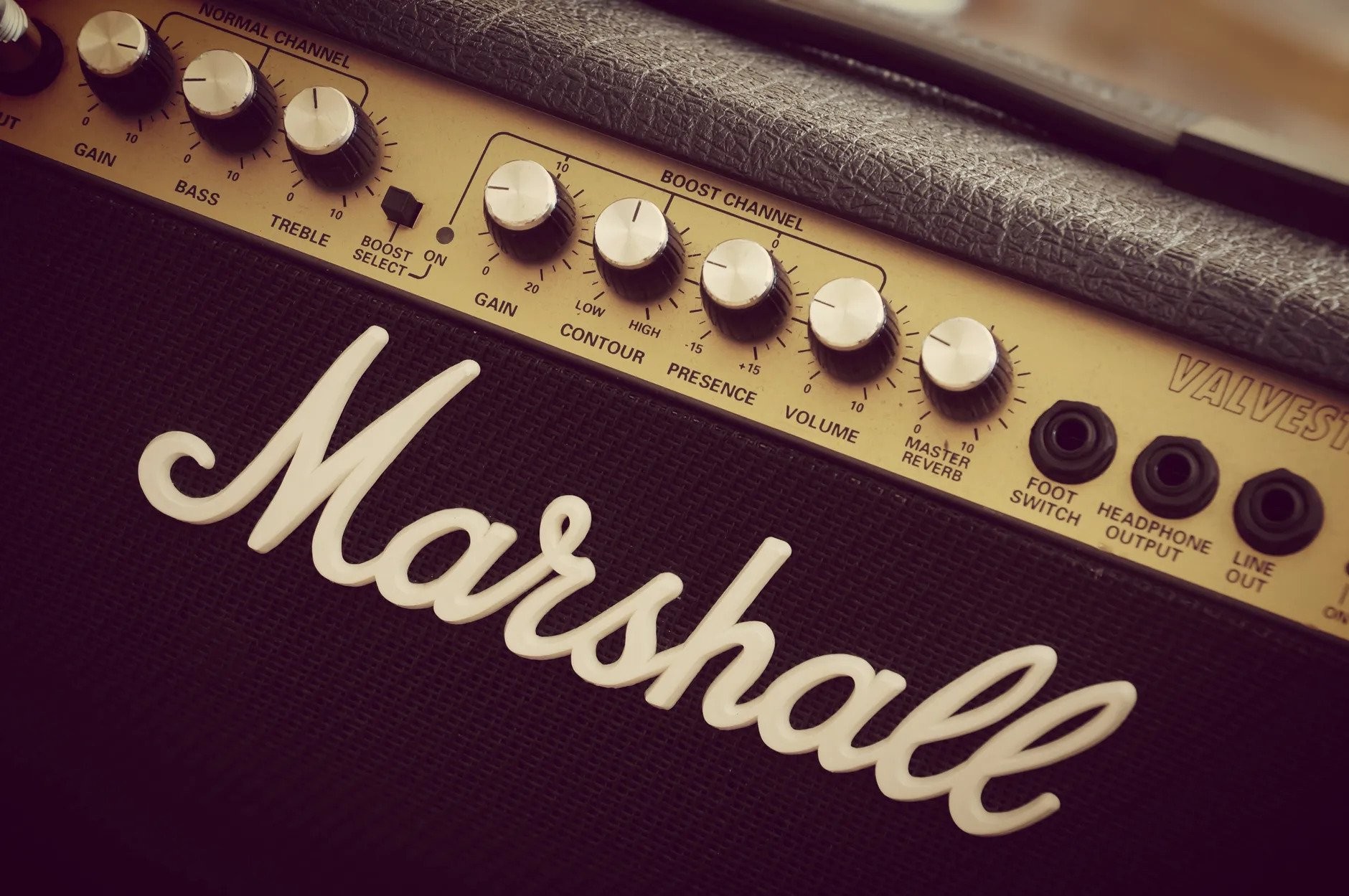Can You Learn On An Electric Guitar? Absolutely! At LEARNS.EDU.VN, we believe the best instrument to start with is the one that ignites your passion. Electric guitars offer unique advantages for beginners, making the learning process enjoyable and effective. Discover how mastering the electric guitar can be a rewarding journey, paving the way for musical skills and creativity. Learn about guitar lessons, guitar playing, and guitar techniques.
1. Debunking Myths About Learning Guitar
Before diving into the specifics of learning on an electric guitar, let’s address some common misconceptions that might be holding you back. These myths often discourage beginners and steer them toward instruments that may not align with their musical aspirations.
1.1. Myth: You Should Learn On Acoustic Guitar First
This is perhaps the most pervasive myth in the guitar world. Many instructors and experienced players suggest that learning on an acoustic guitar first builds finger strength and calluses, supposedly making the transition to electric guitar easier. While it’s true that acoustic guitars often have heavier strings and require more finger pressure, this doesn’t necessarily make them a better starting point for everyone.
The argument goes that if you can master the acoustic guitar, the electric guitar will feel like a breeze. However, this overlooks the fact that the electric guitar offers its own set of unique techniques and playing styles that are not directly transferable from the acoustic guitar.
Why this myth is misleading:
- Different techniques: Electric guitars are designed for techniques like string bending, tapping, and using effects pedals, which are not commonly used on acoustic guitars.
- Motivation: If your goal is to play rock, metal, blues, or any genre that heavily features electric guitar, starting on an acoustic guitar can be demotivating. You might feel like you’re not progressing toward your desired sound.
- Adjustments: As an experienced player who started on electric, transitioning to acoustic required minimal adjustments. It’s about adapting to a slightly different feel, not starting from scratch.
Source:
- Justin Sandercoe from JustinGuitar.com argues that the best guitar to start with is the one that excites you the most.
(JustinGuitar.com)
1.2. Myth: You Need an Amplifier to Buy an Electric Guitar
While having an amplifier certainly enhances the electric guitar playing experience, it’s not an absolute necessity for beginners. The idea that an electric guitar is completely silent without an amp is a common misconception.
Electric guitars produce sound even when unplugged, albeit at a much lower volume than acoustic guitars. This allows you to practice quietly without disturbing others, which can be a significant advantage when starting.
Why this myth is misleading:
- Practice: Unplugged practice is excellent for building finger strength, learning chords, and developing proper technique without relying on amplification.
- Affordability: Purchasing an amplifier can be an additional expense that might deter some beginners. Starting with just the guitar allows you to focus on the fundamentals and invest in an amp later when you’re ready.
- Technology: Modern technology offers alternatives like headphone amplifiers and amp simulators that can be used with headphones for silent practice.
Source:
- Fender Play suggests that while an amp is ideal, it’s not essential to start learning, especially with the availability of practice amps and digital options.
(Fender Play)
1.3. Myth: You Should Learn on Classical Guitar First
Classical guitars, with their nylon strings and wide necks, are often recommended for beginners due to their softer strings, which are supposedly easier on the fingers. However, this recommendation is only relevant if your goal is to play classical or flamenco music.
The wide neck and different string spacing of a classical guitar require a specific hand position and technique that doesn’t translate well to electric or acoustic guitars. Learning on a classical guitar might even hinder your progress if your musical interests lie in other genres.
Why this myth is misleading:
- Different techniques: Classical guitar technique focuses on fingerstyle playing and intricate arrangements, which are not directly applicable to electric guitar.
- Neck size: The wider neck can be challenging for beginners with smaller hands, making it difficult to form chords and reach certain notes.
- Motivation: If you’re not interested in classical music, learning on a classical guitar can be demotivating and lead to frustration.
Source:
- Yamaha Music states that while classical guitars are great for classical music, they aren’t the best choice for other genres due to their specific design and playing style.
(Yamaha Music)
2. Why Choose Electric Guitar as a Beginner?
Now that we’ve dispelled some common myths, let’s explore the reasons why learning on an electric guitar can be a fantastic choice for beginners. Electric guitars offer several advantages that can make the learning process more enjoyable, accessible, and effective.
2.1. Lighter Strings and Easier Playability
Electric guitars typically have lighter gauge strings than acoustic guitars, making them easier to press down and hold. This is especially beneficial for beginners who haven’t yet developed the finger strength and calluses required to play heavier strings comfortably.
The lighter strings also make it easier to perform techniques like string bending, vibrato, and slides, which are essential for playing lead guitar in many genres. This can be incredibly rewarding for beginners who are eager to start playing solos and expressing themselves musically.
2.2. Versatility and Wide Range of Sounds
One of the most appealing aspects of the electric guitar is its versatility. With the right combination of guitar, amplifier, and effects pedals, you can create a vast array of sounds, from clean and mellow tones to crunchy distortion and soaring leads.
This versatility allows you to explore different genres and playing styles, experiment with sound shaping, and find your own unique voice as a guitarist. It also keeps the learning process fresh and exciting, as you can constantly discover new sounds and techniques.
2.3. Modern Learning Resources and Technology
The electric guitar is heavily featured in modern music, and as a result, there are countless learning resources available online, including video lessons, tutorials, tablature, and interactive apps. These resources make it easier than ever to learn guitar at your own pace and in a way that suits your learning style.
Additionally, technology has made it possible to practice electric guitar in a variety of settings, from quiet bedrooms to live stages. Headphone amplifiers, amp simulators, and recording software allow you to experiment with sounds and techniques without disturbing others, while online collaboration tools make it easy to connect with other musicians and share your progress.
2.4. Inspiration and Motivation
Ultimately, the best guitar to learn on is the one that inspires you to keep playing. If you’re drawn to the sounds of electric guitar heroes like Jimi Hendrix, Eric Clapton, or Eddie Van Halen, then starting on an electric guitar will be the most motivating choice for you.
Playing the instrument that you’re passionate about will make the learning process more enjoyable and rewarding, and it will keep you coming back for more, even when you encounter challenges.
3. Essential Gear for Beginner Electric Guitarists
To get started on your electric guitar journey, you’ll need a few essential pieces of gear. While you don’t need to break the bank, investing in quality equipment will make the learning process more enjoyable and help you develop good habits.
3.1. Electric Guitar
Choosing your first electric guitar can be an exciting but daunting task. There are countless brands, models, and styles to choose from, each with its own unique features and sound. Here are a few factors to consider:
- Body Style: Common body styles include solid-body, semi-hollow, and hollow-body. Solid-body guitars are the most versatile and popular choice for beginners, as they offer good sustain and feedback resistance.
- Pickup Configuration: Pickups are the devices that convert the vibrations of your strings into an electrical signal. Common configurations include single-coil, humbucker, and a combination of both. Single-coil pickups tend to have a bright, clear tone, while humbuckers have a thicker, warmer tone.
- Neck Profile: The shape and thickness of the neck can significantly affect your playing comfort. Common neck profiles include C-shape, D-shape, and V-shape. It’s best to try out different neck profiles to see which one feels most comfortable in your hand.
- Budget: Electric guitars range in price from a few hundred dollars to several thousand. It’s important to set a budget and find a guitar that offers good value for your money.
Recommended Beginner Electric Guitars:
| Guitar Model | Body Style | Pickup Configuration | Price Range |
|---|---|---|---|
| Squier Affinity Strat | Solid-body | Single-coil | $200-300 |
| Yamaha Pacifica 112V | Solid-body | HSS | $300-400 |
| Epiphone Les Paul 100 | Solid-body | Humbucker | $300-400 |




Source:
- Guitar Center provides reviews and ratings on a variety of beginner electric guitars, helping you make an informed decision.
(Guitar Center)
3.2. Amplifier
An amplifier is essential for amplifying the sound of your electric guitar and shaping its tone. Like guitars, amplifiers come in a variety of styles and sizes, each with its own unique characteristics. Here are a few factors to consider:
- Wattage: Wattage determines the loudness of the amplifier. For home practice, a low-wattage amp (10-20 watts) is sufficient. For playing with a band or performing live, you’ll need a higher-wattage amp (30 watts or more).
- Speaker Size: Speaker size affects the tone and projection of the amplifier. Smaller speakers (8-10 inches) tend to have a tighter, more focused sound, while larger speakers (12 inches or more) have a fuller, more open sound.
- Features: Some amplifiers come with built-in effects like reverb, distortion, and chorus. These effects can add depth and character to your sound, but they’re not essential for beginners.
- Budget: Guitar amplifiers range in price from a hundred dollars to several thousand. As with guitars, it’s important to set a budget and find an amp that offers good value for your money.
Recommended Beginner Guitar Amplifiers:
| Amplifier Model | Wattage | Speaker Size | Features | Price Range |
|---|---|---|---|---|
| Fender Champion 20 | 20W | 8 inches | Effects, Amp Models | $150-200 |
| Boss Katana Mini | 7W | 4 inches | Amp Models, Delay | $100-150 |
| Orange Crush 12 | 12W | 6 inches | Overdrive | $100-150 |
Source:
- Sweetwater offers detailed descriptions and customer reviews for a wide range of guitar amplifiers.
(Sweetwater)
3.3. Accessories
In addition to a guitar and amplifier, you’ll need a few essential accessories to get started:
- Guitar Cable: A high-quality guitar cable is essential for connecting your guitar to your amplifier.
- Picks: Picks come in a variety of shapes, sizes, and thicknesses. It’s best to experiment with different picks to see which one feels most comfortable and produces the desired sound.
- Tuner: A tuner is essential for keeping your guitar in tune. You can use a standalone tuner, a clip-on tuner, or a tuning app on your smartphone.
- Guitar Strap: A guitar strap is essential for playing standing up.
- Case or Gig Bag: A case or gig bag is essential for protecting your guitar during transport and storage.
4. Mastering the Fundamentals on Electric Guitar
Once you have your gear, it’s time to start learning the fundamentals of electric guitar. These fundamentals will provide a solid foundation for your playing and allow you to progress to more advanced techniques and styles.
4.1. Proper Posture and Hand Positioning
Proper posture and hand positioning are essential for playing guitar comfortably and efficiently. Here are a few tips:
- Posture: Sit or stand up straight with your shoulders relaxed. Avoid slouching or hunching over the guitar.
- Guitar Position: Hold the guitar so that the body rests comfortably against your torso. The neck should be angled slightly upward.
- Left Hand Position: Keep your left wrist straight and your fingers curved. Avoid gripping the neck too tightly.
- Right Hand Position: Rest your right forearm on the body of the guitar and pluck the strings with your fingers or a pick.
Source:
- Berklee Online offers detailed lessons on proper posture and hand positioning for guitarists.
(Berklee Online)
4.2. Learning Basic Chords
Chords are the foundation of most songs, and learning basic chords is essential for playing rhythm guitar and accompanying yourself or others. Here are a few essential chords to start with:
- E Major
- A Major
- D Major
- G Major
- C Major
- E Minor
- A Minor
- D Minor
Practice switching between these chords smoothly and accurately. Use a metronome to develop your timing and rhythm.
4.3. Developing Finger Strength and Dexterity
Developing finger strength and dexterity is essential for playing guitar comfortably and efficiently. Here are a few exercises you can do to improve your finger strength and dexterity:
- Finger Exercises: Practice scales, arpeggios, and chromatic exercises to strengthen your fingers and improve your coordination.
- Chord Changes: Practice switching between chords smoothly and accurately.
- String Bending: Practice bending strings to develop finger strength and control.
- Vibrato: Practice vibrato to develop finger strength and expression.
4.4. Understanding Basic Music Theory
Understanding basic music theory can greatly enhance your playing and songwriting abilities. Here are a few essential music theory concepts to learn:
- Scales: Scales are a series of notes arranged in a specific order. Learning scales will help you understand the relationships between notes and improvise solos.
- Chords: Chords are a combination of three or more notes played simultaneously. Learning chords will help you understand harmony and write songs.
- Rhythm: Rhythm is the arrangement of notes and rests in time. Learning rhythm will help you play in time and create interesting musical patterns.
- Key Signatures: Key signatures indicate the key of a song and the sharps or flats that are used in that key.
5. Advanced Techniques for Electric Guitar
Once you’ve mastered the fundamentals, you can start exploring more advanced techniques that will allow you to express yourself more fully on the electric guitar. These techniques will add depth, character, and excitement to your playing.
5.1. String Bending and Vibrato
String bending involves pushing or pulling a string across the fretboard to raise its pitch. Vibrato is a subtle oscillation of the pitch of a note. These techniques are essential for adding emotion and expression to your playing.
- String Bending:
- Use your fingers to grip the string firmly.
- Bend the string smoothly and gradually.
- Listen carefully to the pitch and aim for the desired note.
- Vibrato:
- Use your wrist to create a subtle oscillation of the pitch.
- Keep the vibrato consistent and controlled.
- Experiment with different speeds and widths of vibrato.
5.2. Alternate Picking and Sweep Picking
Alternate picking involves using both upstrokes and downstrokes to play notes, while sweep picking involves using a single downstroke or upstroke to play multiple notes across different strings. These techniques are essential for playing fast, intricate passages.
- Alternate Picking:
- Use a consistent up-down-up-down motion.
- Keep your wrist relaxed and avoid excessive movement.
- Practice with a metronome to develop your timing.
- Sweep Picking:
- Use a smooth, fluid motion to pick across the strings.
- Mute the strings that you’re not playing to avoid unwanted noise.
- Start slowly and gradually increase your speed.
5.3. Tapping and Hammer-Ons/Pull-Offs
Tapping involves using your picking hand to tap notes on the fretboard, while hammer-ons and pull-offs involve creating notes by hammering down on or pulling off of a string. These techniques are essential for playing fast, legato passages.
- Tapping:
- Use your middle finger to tap the notes on the fretboard.
- Tap firmly and accurately.
- Mute the strings that you’re not playing to avoid unwanted noise.
- Hammer-Ons/Pull-Offs:
- Use your fretting fingers to create the notes.
- Hammer down on the string firmly to create a hammer-on.
- Pull your finger off the string quickly to create a pull-off.
5.4. Using Effects Pedals
Effects pedals are devices that alter the sound of your electric guitar. They can be used to create a wide variety of sounds, from subtle enhancements to radical transformations. Common effects pedals include:
- Overdrive/Distortion: Adds gain and sustain to your signal, creating a crunchy or distorted sound.
- Delay: Repeats your signal after a short delay, creating a spacious or echoing sound.
- Reverb: Simulates the sound of playing in a reverberant space, adding depth and ambience to your signal.
- Chorus: Creates a shimmering, swirling effect by doubling your signal and slightly detuning it.
- Wah: Creates a sweeping, vocal-like sound by filtering your signal.
Experiment with different effects pedals and combinations to discover your own unique sounds.
6. Practice Strategies for Electric Guitar
Effective practice is essential for making progress on the electric guitar. Here are a few strategies to help you get the most out of your practice sessions:
6.1. Set Realistic Goals
Set small, achievable goals for each practice session. This will help you stay focused and motivated. For example, you might set a goal to learn a new chord, master a difficult passage, or improve your timing.
6.2. Practice Regularly
Consistency is key to making progress on the electric guitar. Aim to practice at least 30 minutes each day. Even short, regular practice sessions are more effective than long, infrequent ones.
6.3. Focus on Weaknesses
Identify your weaknesses and focus on improving them. This might involve practicing difficult chords, working on your timing, or mastering a particular technique.
6.4. Record Yourself
Recording yourself playing can be a valuable tool for identifying areas for improvement. Listen back to your recordings and analyze your playing critically.
6.5. Play with Others
Playing with other musicians is a great way to improve your timing, develop your ear, and learn new songs and styles. Join a band, attend jam sessions, or take lessons with other guitarists.
7. Finding Inspiration and Staying Motivated
Learning electric guitar can be challenging, but it’s also incredibly rewarding. Here are a few tips for finding inspiration and staying motivated:
7.1. Listen to Your Favorite Guitarists
Listening to your favorite guitarists can inspire you and give you new ideas for your own playing. Pay attention to their techniques, tone, and phrasing.
7.2. Learn Your Favorite Songs
Learning your favorite songs is a great way to improve your skills and expand your repertoire. Start with simple songs and gradually work your way up to more complex ones.
7.3. Set Performance Goals
Setting performance goals can give you something to strive for and keep you motivated. This might involve playing at an open mic night, performing with a band, or recording your own music.
7.4. Connect with Other Guitarists
Connecting with other guitarists can provide you with support, encouragement, and inspiration. Join a guitar forum, attend a guitar workshop, or take lessons with a group of guitarists.
7.5. Celebrate Your Progress
Acknowledge and celebrate your progress, no matter how small. This will help you stay motivated and appreciate the journey.
8. The Role of a Good Teacher
While it’s possible to learn electric guitar on your own, working with a good teacher can greatly accelerate your progress and help you avoid developing bad habits. A good teacher can:
8.1. Provide Personalized Instruction
A good teacher can assess your skills and goals and create a personalized learning plan that is tailored to your needs.
8.2. Offer Expert Feedback
A good teacher can provide you with expert feedback on your playing, helping you identify areas for improvement and develop good habits.
8.3. Motivate and Encourage You
A good teacher can motivate and encourage you, helping you stay on track and achieve your goals.
8.4. Introduce You to New Concepts and Techniques
A good teacher can introduce you to new concepts and techniques that you might not discover on your own.
8.5. Provide a Structured Learning Environment
A good teacher can provide you with a structured learning environment that will help you stay focused and make consistent progress.
9. Latest Trends in Electric Guitar Education
The world of electric guitar education is constantly evolving, with new technologies and teaching methods emerging all the time. Here are a few of the latest trends:
9.1. Online Guitar Lessons
Online guitar lessons have become increasingly popular in recent years, offering a convenient and affordable way to learn from experienced instructors. Online platforms like TrueFire, JamPlay, and Fender Play offer a wide variety of lessons, tutorials, and courses for guitarists of all levels.
9.2. Interactive Learning Apps
Interactive learning apps like Yousician and Rocksmith use gamification and real-time feedback to make learning guitar more engaging and effective. These apps listen to your playing and provide instant feedback on your accuracy and timing.
9.3. Virtual Reality (VR) Guitar Lessons
Virtual reality (VR) guitar lessons are an emerging trend that promises to revolutionize the way people learn guitar. VR lessons allow you to practice in a virtual environment with a virtual instructor, providing a realistic and immersive learning experience.
9.4. Hybrid Learning Models
Hybrid learning models combine online and in-person instruction, offering the best of both worlds. These models allow you to learn at your own pace online while also receiving personalized feedback and guidance from a teacher in person.
10. Electric Guitar: A Lifelong Journey
Learning electric guitar is a lifelong journey. There’s always something new to learn, whether it’s a new technique, a new song, or a new style of music. Embrace the journey and enjoy the process of learning and growing as a guitarist.
10.1. Continuous Learning
Commit to continuous learning and never stop exploring new possibilities on the electric guitar. Take lessons, attend workshops, listen to new music, and experiment with new techniques.
10.2. Embrace Challenges
Embrace challenges as opportunities for growth. Don’t be afraid to try new things, even if they seem difficult or intimidating. The more you challenge yourself, the more you’ll improve.
10.3. Find Your Own Voice
Ultimately, the goal of learning electric guitar is to find your own voice and express yourself musically. Don’t be afraid to experiment and develop your own unique style.
10.4. Share Your Music
Share your music with others and inspire them to pursue their own musical dreams. Play for your friends and family, perform at open mic nights, or record your own music and share it online.
10.5. Enjoy the Process
Most importantly, enjoy the process of learning electric guitar. It’s a rewarding and fulfilling journey that can bring you joy, creativity, and connection.
FAQ: Learning Electric Guitar
Here are some frequently asked questions about learning electric guitar:
- Is it hard to learn electric guitar?
- Learning electric guitar can be challenging, but it’s also very rewarding. With consistent practice and a good teacher, anyone can learn to play.
- How long does it take to learn electric guitar?
- The amount of time it takes to learn electric guitar varies depending on your goals and dedication. With regular practice, you can start playing basic songs within a few months.
- What is the best age to start learning electric guitar?
- There is no “best” age to start learning electric guitar. People of all ages can learn to play.
- Do I need to know how to read music to learn electric guitar?
- No, you don’t need to know how to read music to learn electric guitar. Many guitarists learn using tablature, which is a simplified notation system that shows you where to place your fingers on the fretboard.
- Can I learn electric guitar online?
- Yes, you can learn electric guitar online. There are many excellent online resources available, including video lessons, tutorials, and interactive apps.
- What are the essential skills for playing electric guitar?
- The essential skills for playing electric guitar include proper posture and hand positioning, learning basic chords, developing finger strength and dexterity, and understanding basic music theory.
- What are the benefits of learning electric guitar?
- The benefits of learning electric guitar include improved coordination, increased creativity, stress relief, and the ability to express yourself musically.
- What kind of electric guitar should I buy as a beginner?
- As a beginner, look for an affordable and versatile electric guitar with a comfortable neck and good sound.
- Do electric guitars require more maintenance than acoustic guitars?
- Electric guitars may require slightly more maintenance, including adjusting the action, cleaning the electronics, and changing the strings regularly.
- Can learning electric guitar improve cognitive skills?
- Yes, learning electric guitar can improve cognitive skills such as memory, focus, and problem-solving.
Are you ready to embark on your electric guitar journey? Visit LEARNS.EDU.VN today for more information, resources, and courses to help you achieve your musical goals. Our expert instructors and comprehensive curriculum will guide you every step of the way.
Contact Us:
- Address: 123 Education Way, Learnville, CA 90210, United States
- Whatsapp: +1 555-555-1212
- Website: learns.edu.vn
Photo by Keith Wako on Pexels, depicting the passion and dedication of learning to play guitar in a field.
